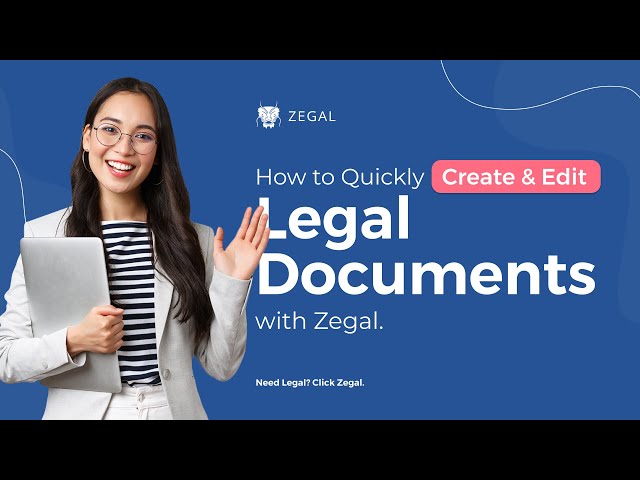How to generate a Consignment Agreement
What is a consignment agreement?
A consignment contract, also known as a consignment sales agreement or consignment inventory agreement, is an agreement between a seller or a sender, referred to as the consignor, and a buyer or a receiver, referred to as consignee, that sets out the legal rights and duties of both parties for the storage, transfer, sale or resale and use of goods.
What is consignment?
Consignment is a business arrangement or method in which the consignee agrees to store, sell, resell or transfer goods owned by the consignor in exchange for a percentage of the sales, called commission.
In this case, the consignor has legal ownership of the goods, and the consignee only acts within the authorised actions specified in the consignment agreement.
There are two parties involved in a Consignment Agreement. i.e., consignor and consignee.
What is a consigner?
A consignor is the person or entity that owns the goods and is the sender or the shipper of the goods to the consignee for the consignee to sell, store, resell, or transfer on behalf of the consignor.
What is a consignee?
The consignee is the party who receives the goods from the consignor and is given the right to store the goods in a warehouse or to sell the goods on behalf of the consignor in exchange for a percentage of the sales as agreed on between the parties.
Consignees are often referred to as receivers or dealers.
The consignee is considered a third party that connects the consignor to any potential buyers or purchasers of the goods since the consignor is the legal owner, and the consignee’s rights and obligations are set out and limited to what is agreed on in the consignment agreement.
What are the components of a Consignment Agreement?
When preparing a Consignment Agreement, it is crucial to specify the commission rate, sales deadline, and the consequences in the event of no sale.
Some of the main components of a Consignment Agreement are:
Introduction of parties: As with any other legal document, Identifying the parties and the date of the agreement is mandatory.
Payment and Commission: Since the consignment arrangement deals with selling goods through the consignee as a third party, the agreement should include a section or several clauses that indicate what percentage of the sale will be kept by the consignee as a “fee” for its services. This should also mention details about who bears the cost of shipping.
Return of Products: During the consignment process, the consignor may request the consignee return of its products by giving the consignee a notice. There might be some circumstances when a consignee has to return the products. Usually, in such cases, a consignee can return the goods with no extra cost involved.
Risk of loss or damage of goods:
A consignee is responsible for maintaining and protecting the products while they are in possession, which means that if any products are damaged during that time, the consignee must compensate the consignor for that loss.
Termination: A section of the consignment agreement should explain how the parties can end the contract at any time for any reason. If the parties decide to terminate the agreement, include clear instructions on how unsold products should be returned and how long the consignee has to return them.
Other general provisions: Numerous other conditions may also need to be addressed. For example, any local governing rule in case of disputes or the process for the same will be mentioned here.
Governing law and equitable relief: State any county laws that will be used to interpret the agreement. For instance, any court remedies requiring a party to perform or refrain from performing certain acts for any violation of the agreement.

How do consignment agreements work?
A Consignment Agreement permits a consignee to make a sale or sell off goods on a consignor’s behalf without purchasing them.
This arrangement allows stores and outlets to advertise and market the sale of products without the risk of investing or purchasing the goods.
There are two types of consignment agreements: exclusive and nonexclusive agreements.
In the case of exclusive consignment agreements, the consignee is the only person with the right to sell the consignor’s goods.
Nonexclusive consignment agreements allow multiple consignees to try and sell the same good.
What is the difference between outward and inward consignment?
Outward Consignment: A consignor holds the right to own the property until the goods are sold. Additionally, a consignee may send the goods to another place for sale.
Inward Consignment: The consignee will try to sell the goods under the consignor’s instructions.
What is the difference between a consignment agreement and a sales agreement?
A consignment and sales agreement serve different purposes and have distinct implications for the parties involved. Here are some key differences:
Ownership:
- Consignment Agreement: The consignor retains ownership of the goods until they are sold. The consignee holds the goods and attempts to sell them on behalf of the consignor.
- Sales Agreement: Ownership of goods transfers from the seller to the buyer as soon as the sale is complete and all terms (such as payment) have been met.
Payment and Risk:
- Consignment Agreement: The consignor assumes most of the risk because payment is only received after the consignee successfully sells the goods. The consignee usually takes a commission from the sale.
- Sales Agreement: The buyer generally assumes the risk, paying for the goods upfront or according to agreed payment terms. Once ownership is transferred, the buyer is responsible for the goods.
Inventory:
- Consignment Agreement: The goods are part of the consignor’s inventory until sold. Unsold goods may be returned to the consignor, depending on the terms of the agreement.
- Sales Agreement: The goods become part of the buyer’s inventory as soon as the sale is finalised.
Purpose:
- Consignment Agreement: The primary purpose is for the consignee to sell the goods on behalf of the consignor, and can be beneficial for consignors who do not have a retail outlet or for consignees who want to offer a broader range of products without the financial outlay of purchasing stock.
- Sales Agreement: The primary purpose is the transfer of ownership of goods from the seller to the buyer.
Record-Keeping:
- Consignment Agreement: Detailed record-keeping is crucial for tracking which goods have been sold, what remains in inventory, and how much is owed to the consignor.
- Sales Agreement: Once the sale is complete, the primary concern is accounting for the transaction in financial records, but less ongoing record-keeping is involved compared to consignment.
Flexibility:
- Consignment Agreement: These agreements offer some flexibility for the consignee regarding inventory management. They can return unsold goods if they do not meet sales expectations.
- Sales Agreement: The buyer generally can’t return goods unless they are defective or there is some other issue covered under a warranty or return clause in the sales agreement.
How do you decide between a sales agreement or a consignment agreement?
The two agreements have very different uses, purposes, and outcomes.
Choosing one best suited for your needs will largely depend on what you look forward to from your business.
A consignment could be more suitable for those who want to expand into new markets and get into large-scale production and distribution.
On the other hand, if you want to increase your profit margins only, you could go for a sales agreement to avoid paying the extra remuneration fees to the consignee.
What are the benefits of having a consignment agreement?
Consignment, in general, allows businesses to run more cost-effectively.
It allows the focus to be on manufacturing and producing the goods rather than storage. It is a great way to scale up the business. It also allows for vast geographical expansion by allowing local market experts to operate in a market they are familiar with.
However, every local jurisdiction will have its rules and system in place, so a consignment agreement helps ensure that both parties have a good base on all such legal grounds.
Consignment agreements also allow consignee to improve their gains through sales and commissions.
But it is also beneficial for consigners; they can sell items and make revenue without paying an upfront fee. For consigners, another added benefit is restocking goods as they flow without purchasing more new ones.
Stay compliant with the Zegal template library
Zegal legal template are meticulously crafted with the precision of AI and the expertise of seasoned human lawyers, providing a unique blend of speed and reliability.
You can trust that Zegal agreements are legally sound and fully compliant with current regulations.
Whether you're a startup, SME, or a larger enterprise, Zegal contract management will automate and speed up your legal processes.
Using Zegal will reduce risk, save money, and improve efficiency. Let us take care of the paperwork so you can focus on running your business.
Don’t compromise on speed or compliance. Stay secure, compliant, and efficient with Zegal.







